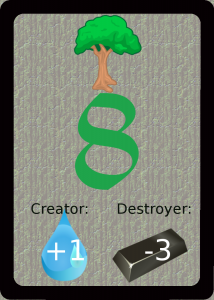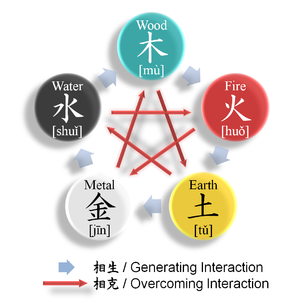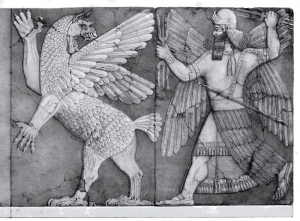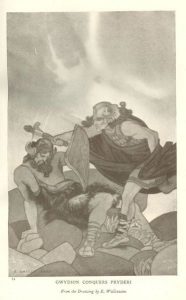
Jack-o’-lanterns, a present-day incarnation of ancient tradition – Photo by William Warby
So, seeing as Halloween falls on a Mythic Monday this year, I thought I’d step aside for a week and cover a little bit of the mythic significance of the Celtic New Year.
The end of the harvest, the start of winter – Samhain was one of the two nights when ancestors could return to Earth (the other being what is now May Day)
To thank the ancestors for their guardianship of the fields, some of the fruits of the harvest were set aside for them. Apples, beer or cream were common, with cakes or biscuits for those who had no harvest but their labour. Lords would feast their households, providing for the whole community out of respect for the powers of nature that had provided the harvest.
It became traditional for people who could not provide their own feasts to disguise themselves and accept the spirits portion on their behalf. This also applied to the newly betrothed or married, who had no harvest yet in their new home.This tradition was taken to America by Irish emigrants, and became Trick or Treat.
The name Hallowe’en is from the Catholicized All Hallows Eve – the following day is a day to pray for all those who have gone to purgatory. Some churches still have a potluck supper around this time, to share food with those who have less. Some schools share food with the elderly, and many folk use the onset of winter as a reminder that hard times can affect anyone.
Of course, not all spirits who return are benevolent, and the Jack O the Lantern was an invocation set to watch for malevolent ghosts and scare them away.
So, now ghosties and ghoulies and long-leggedy beasties haunt the night when the walls to the Underworld grow thin. So, take care tonight, and perhaps leave the ancestors a little something?
Story – The Shapeshifter Duel
Some witches excel at shapeshifting, and the duel between them is called certamen. There was once a witch who wished to kill a Laird, but the Laird rarely left his castle.
But one day the Laird went to help one of his tenants with the lambing. On a snowy hilltop, the Laird and the Witch met.
“I have you now!” Said the witch.
“I will duel you for the lambs, for the people and for my life” said the laird.
She became a duck and Claimed the pond
And He took the shape of a hound and fetched her
She became a trout and Claimed the stream
And He took the shape of an otter and caught her
She became a star and Claimed the sky
And He took the shape of a thundercloud and muffled her
She became a rose and Claimed the earth
And He took the form of a bumblebee and stung her
Finally, the witch became her own form
And the Laird resumed his own shape.
“By what power have you Beaten me?” asked the witch
“By the power of three things – My land, and my people, and my God.
And by these things, I banish you.”
And the witch was gone, and not seen again
Editors note: We’ve mentioned Certamen previously, with respect to Gwydion Gwyn
In games and stories
Different folk celebrate different festivals, so think about the folk in your story. What feasts do they celebrate?. Is New Year in the depth of winter, or in Spring?. Most communities, however urban, recognise the farming year, and have some kind of festival for planting, growing, harvesting and winter. Common also are national recognitions – the king’s birthday, Guy Fawkes Night, Bastille Day.
Fantasy festivals might be dedicated to any of the gods we’ve covered, and any published god might have such a day. When crafting a world, or a nation, don’t forget saints and national heros – the Day of the First Emperor, or St Patrick’s Day. Borrow from real-world festivals to offer details. Perhaps Pelor’s followers dance a maypole in Spring. Perhaps Offler has a Crocodile Day, when everyone brings food to appease the holy crocodiles. Perhaps Raiden sponsors a midwinter storm festival – lock your doors and fast until sunrise.
Consider:
When is this – summer, winter, all week, an hour at dusk, a minute at 11 AM?
Who has this festival – the whole community, just followers of Hera, just hobbits?
If it’s the whole community, how do devotees of the god feel about this?
What does the festival looks like – Diwali lights, Eid Fireworks, Jack O Lanterns?
What are the smells and sounds – Incense reminiscent of many ceremonies from Catholicism to Shinto, or Chinese New Year firecracker smoke?
What do people eat – feast or fast? Unleavened bread, Diwali sweets, nothing between sunrise and sunset?
What do rituals do people do – Confess their sins, wash, dance, sing, kneel, wave flags?
What taboos are enacted or redacted – women are free to have sex, curfew after dark, slaves served by masters?
How does the festival end? Sunrise, when the bell tolls, when everyone drunkenly passes out?
If you want more detailed festivals for your game, join us at Jigsaw Fantasy and vote for our pieces on religions, races, or cultures.
Please follow and like us:





